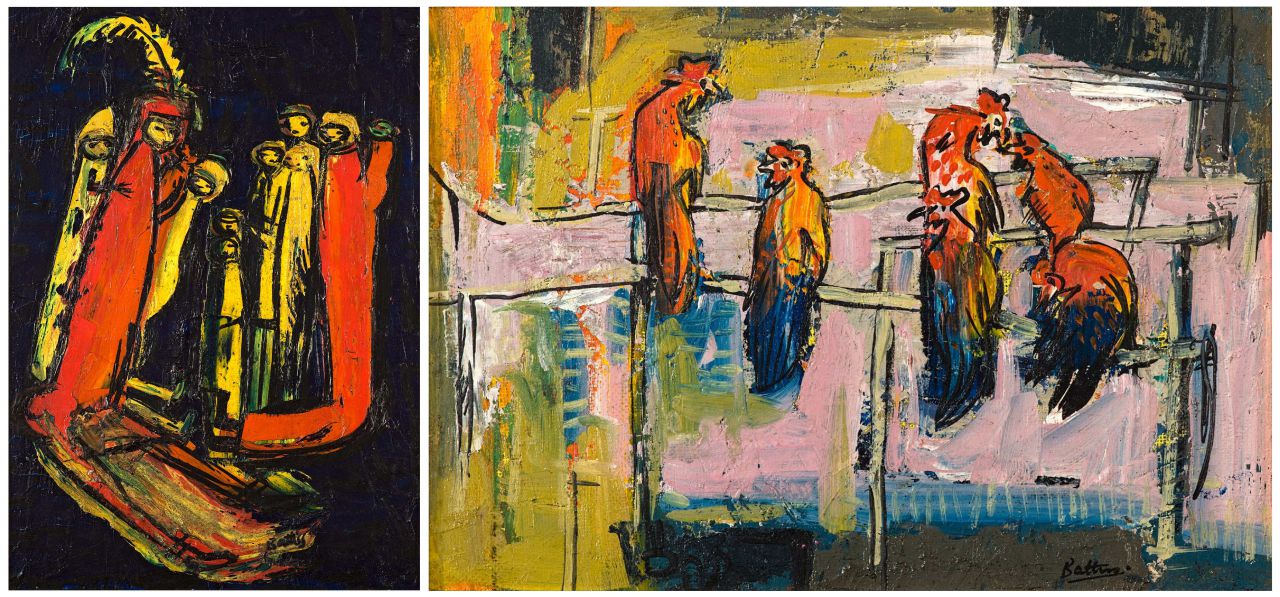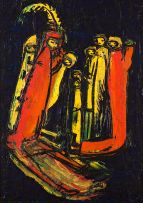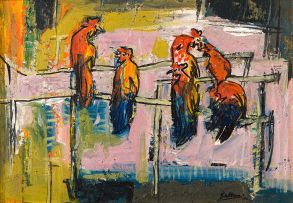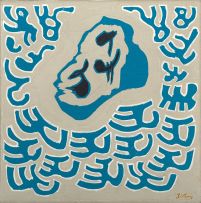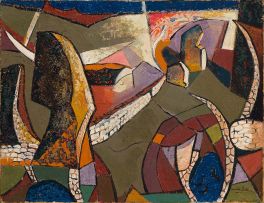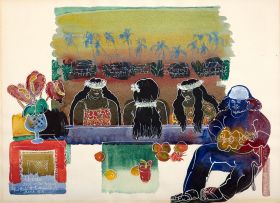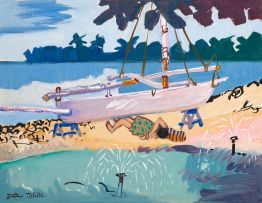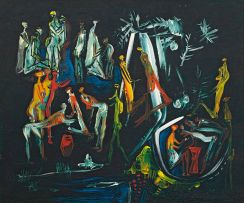Important South African and International Art, Decorative Arts & Jewellery
Live Auction, 15 October 2018
Art: Evening Session
Incl. Buyer's Premium & VAT
About this Item
signed
Notes
Accompanied by a copy of a letter from Walter Battiss to Mrs Patricia Torr, dated 18 July 1955.
An excerpt from the letter reads:
"The Yellow Feather, is one of my favourite paintings & I think one of my best & I'm glad you like it. The Feather is shown with a group of people based on my African experience. The ostrich feather has always been connected with ancient rites especially in the dressing up for battle. The feather is therefore the flaunt of barbarity."
Esmé Berman was correct in describing Walter Battiss as a painter of "elusive versatility".1 Notwithstanding his many stylistic transformations, Battiss' mature oeuvre - it dates from after his first trip to Europe in 1938 - is nonetheless marked by his fidelity to the human figure. The human recurs ceaselessly in Battiss' work, and most often in groups. This lot dates from the 1950s and is emblematic of Battiss' fauvist period when he used bold colours and visible painterly techniques to produce his compositions. The two compositions constituting this lot are both figurative assemblies and showcase Battiss' sgraffito technique of inscribing images into layers of wet paint. The Yellow Feather portrays ten human presences, two of them totemic mother figures distinguished by their blood-orange garments. The dominant figure with ritual feather is further accentuated by a mirrored image in the foreground that echoes the red and yellows. The titular fowls in Six Roosters are defined with a black line etched into a layered ground of colours: a base of deep blue, onto which is overlaid fields of mustard, pink, red and orange. - Sean O'Toole
1. Esmé Berman (1970). Art and Artists of South Africa, Cape Town: AA Balkema. Page 41.
Provenance
Stephan Welz & Co in association with Sotheby's, Cape Town, 11 October 1999, lot 281.
